Toyota C-HR Hybrid review: style over space – but still plenty of substance
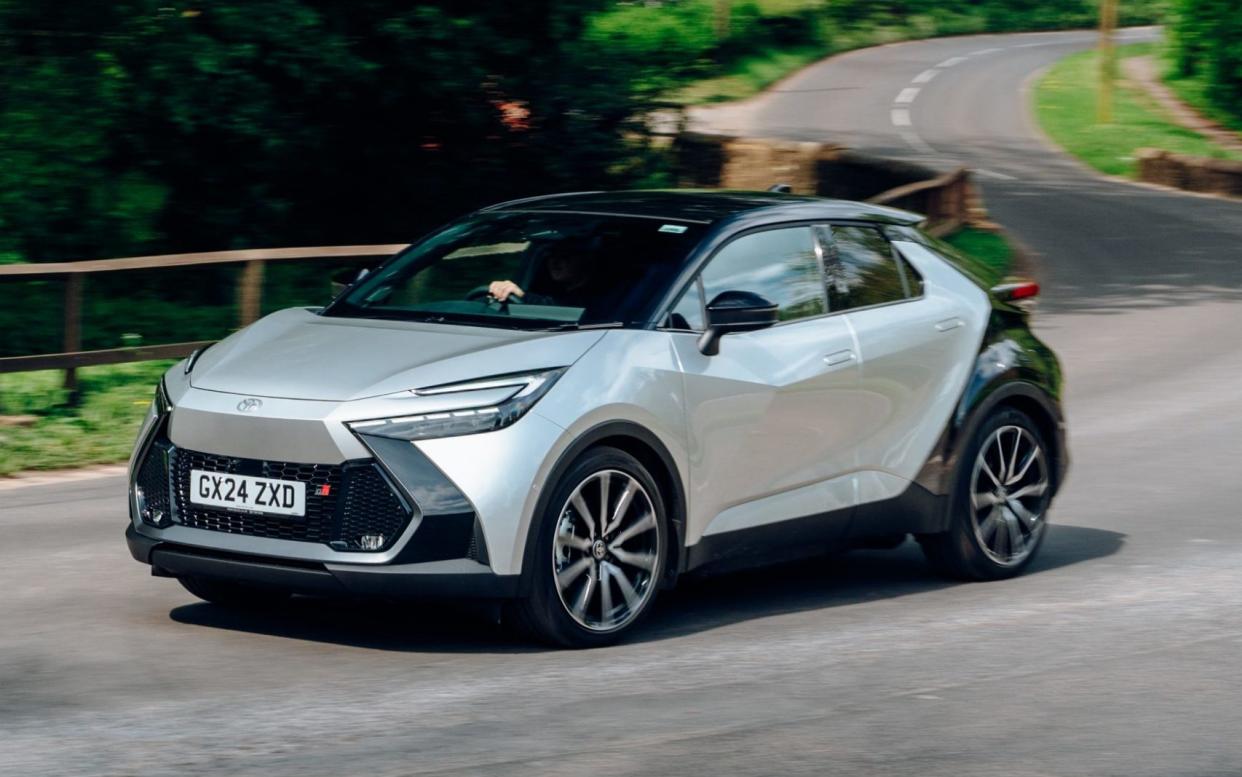
Who is buying the Toyota C-HR? On the face of it, this compact SUV – well, more of an elevated hatchback, like the Nissan Qashqai – shouldn’t be all that popular. The accepted wisdom is that SUV buyers need and want practicality. Yet with its claustrophobic rear quarters and relatively small boot, this is one trait in which the C-HR doesn’t excel.
Nevertheless, it has been a bit of a winner for Toyota. Why? Arguably, it’s because the C-HR is targeted at a different demographic.
I’ll explain: not everyone buying a small SUV such as this actually needs child seat-friendly rear seats and a boot fit for a tonne of offspring-related clutter. Some people simply want a car that’s easy to climb in and out of, easy to drive, and – crucially – isn’t boring to look at.
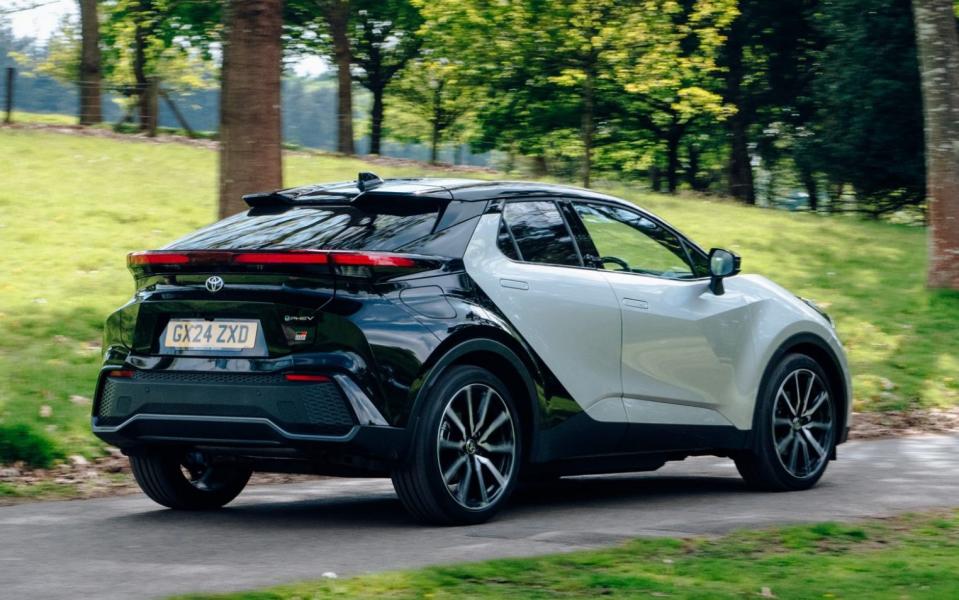
They don’t carry rear passengers often, while the boot only needs to be big enough for a couple of suitcases for holidays. As a result, such buyers are happy to sacrifice space for a bit of style.
Of course, style is subjective, but there’s no denying the original C-HR caught the eye. So, too, does this second-generation model. From the front its big, crescent-shaped headlights and beaky nose tread a fine line between aggression and quirkiness.
The side profile’s odd proportions and tiny rear window suggest an attempt to invoke a coupé. At the rear, meanwhile, the ridge of full-width LED bands that make up the rear lights looks like something you’d find on a B-movie UFO.
Whether you like it or not, there’s no denying the C-HR stands out from the crowd of squared-off, rather uniform SUVs that constitute its rivals. Question is: is there any substance beneath the style?
Pros
Extrovert styling
Easy-to-use interior
Comfortable ride – most of the time
Cons
Small boot
Cave-like rear seats
Relatively costly
Hybrid theory
Our early drive in the C-HR was limited to the plug-in hybrid model, which won’t be the best-seller (but if you’re a company car driver, its comparatively low tax liability makes it the model you should probably be looking at instead).
The model tested here is the meat of the C-HR range: the full hybrid with the 1.8-litre engine (there’s also a more potent 2.0-litre unit). As you might expect, this has the same powertrain as the recently facelifted Toyota Corolla, a car with which we were mighty impressed and remain so, which bodes well.
The power output of 138bhp isn’t earth-shattering, but it places this version of the C-HR in the thick of the melee of petrol, diesel and full and mild hybrid options, all available around this size and price.
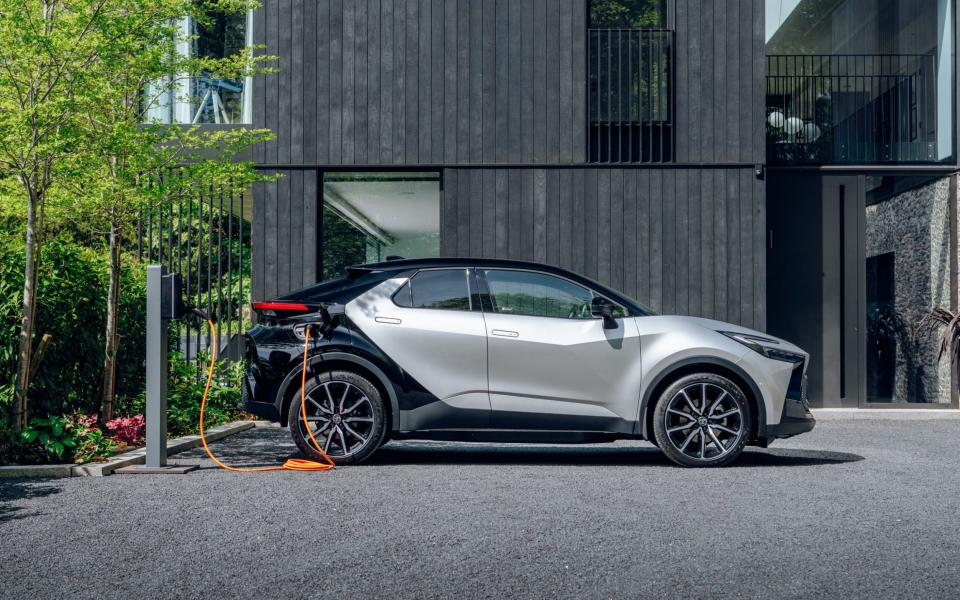
Ah yes, price. The £38,000-odd you’ll pay for this top-flight Excel model with this powertrain isn’t exactly cheap; the equivalent Hyundai Kona Hybrid has a near-£4,000 advantage over the C-HR and is better equipped (though, admittedly, slightly less powerful). And it’s worth noting that there are some solid diesel and mild hybrid rivals, such as the Volkswagen T-Roc and Peugeot 2008, available for less.
This becomes especially salient when you realise the C-HR doesn’t have the fuel economy advantage over these that you might expect. For example, a 2008 with the new mild hybrid powertrain is a touch down on power, but not much – and it can achieve identical economy to the full hybrid C-HR. With a T-Roc diesel, you can get even more miles to the gallon.
The C-HR, however, fights back with its warranty; once the standard three-year guarantee has expired, you get an additional year’s worth each time you use a Toyota dealer for servicing, up to a maximum of 10 years and 100,000 miles – making this the best warranty in the business. Not that you should need it; Toyota’s reputation for reliability is beyond compare.
Back-seat shenanigans
But what about the rear seats? Well, the C-HR is certainly roomier than before; no longer will taller adults find their knees brushing the backs of the front seats. Having said that, the low-mounted bases and small windows surrounded by a sea of black plastic will be familiar to those who’ve been unfortunate enough to spend any time in the back of the old version.
The limited view out won’t help children who are prone to car sickness, either; in fact, this remains a fairly child-unfriendly car, given the narrow door apertures will make it difficult to load babies and ensure that leaning in to buckle up older offspring is rather awkward.
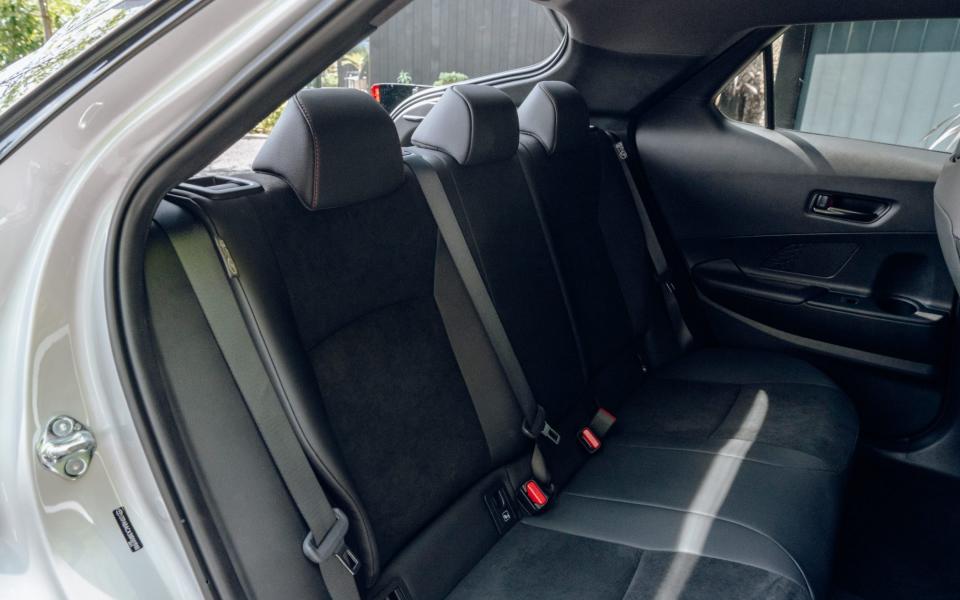
The 388-litre boot is once again rather measly; it’s even smaller if you choose the 2.0-litre hybrid or the plug-in option (the latter’s 310-litre luggage space is somewhat laughable).
But as mentioned, perhaps all this is forgivable if you don’t need much room in the back seats or boot. Certainly, in the front, the C-HR is no less unusual to look at than it is from without, with lines that swoop and dive around you, flowing from the dashboard down into the centre console.
The result is a feeling of being enclosed within it, which holds a certain appeal, but also means it feels less airy than some of its roomier rivals, while the protruding dashboard is too easy to clonk with your left knee.
With that exception, though, the front of the C-HR is a nice enough place to be, with good-quality materials and a general sense of solid accomplishment. It’s easy to use, too, with physical buttons for the majority of functions rather than touchpads.
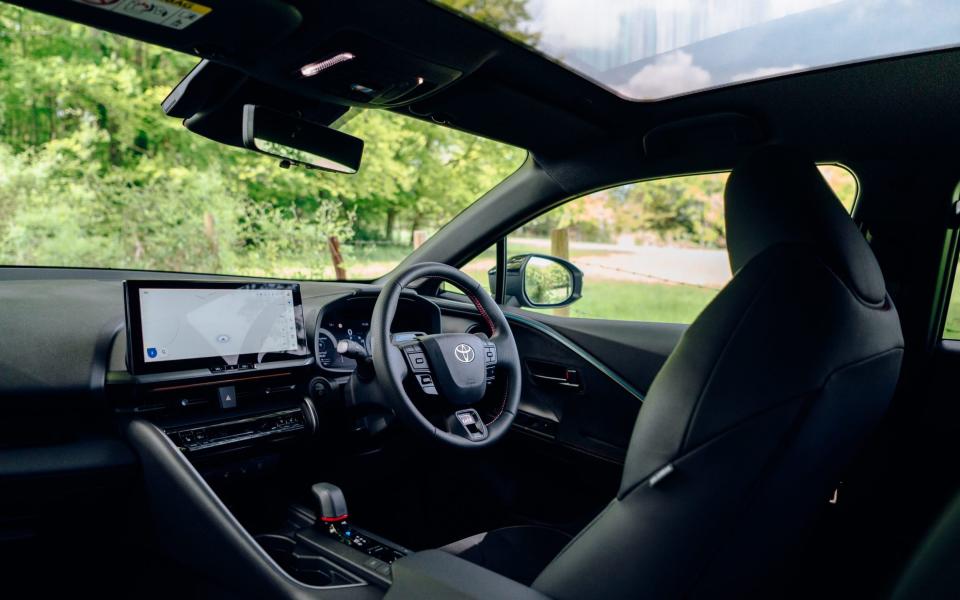
The central touchscreen can be slow to respond to your touch, meanwhile, while some of the graphics look a little dated, but generally the menus are well laid out and pretty intuitive.
Silent running
Press the large button to start the C-HR and you get a gentle “bong” to let you know it’s ready. This sets a trend for further, gentle bongs.
You might think this a bad thing – but no. These days pretty much every car has to have a speed limit warning system, which chides you when you transgress the limit by even 1mph (and relies on the car’s cameras reading the signs correctly – which they don’t always do).
As you might imagine, this grows tiresome, especially when the warnings are strident. In the C-HR, however, they are not. In fact, they’re so quiet that you can’t really hear them once you’ve switched on the radio. A conscious decision by Toyota to make this mandatory system more liveable-with, perhaps? Either way, if bongs are non-negotiable, I’ll take quiet ones over loud ones.
This is not the only thing about the C-HR that turns out to be better than it might at first seem. Pull away and you’ll immediately feel the sting of the big wheels clanging away at sharper ruts in the road and mentally make a note to book a chiropractor.
And yet, above 10mph the suspension just seems to switch on – damping out the clumping of the wheels over bumps effectively, if not completely. With the 17- and 18-inch wheels fitted to the Icon and Design models, it’d likely be even better.
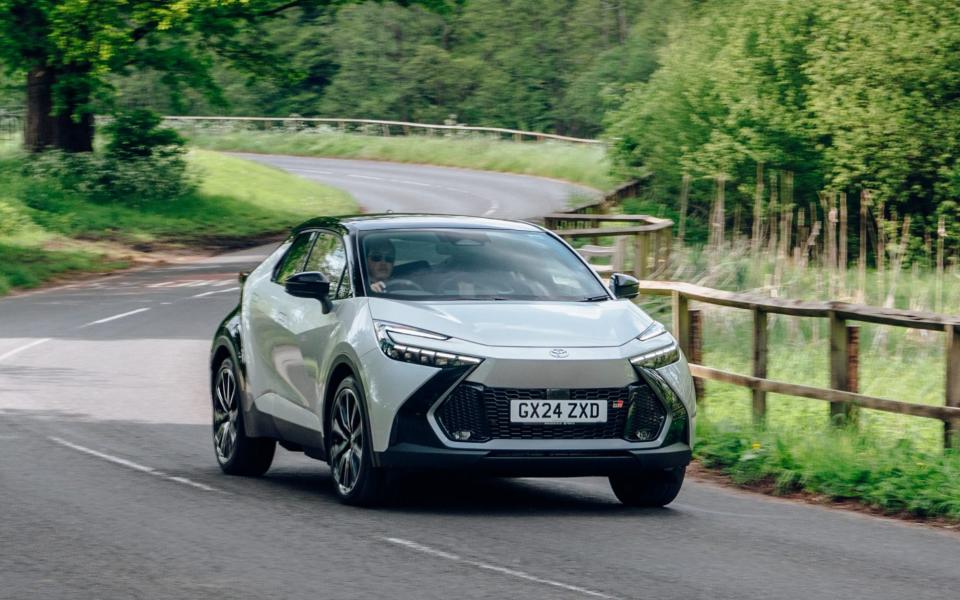
The handling is crisp, if not exactly involving; the C-HR resists sway in faster bends and turns in neatly when you ask it to, though the complete lack of feedback through the steering and the mushy response from the engine thanks to the continuously variable gearbox rather mask any enjoyment.
Having said that, this is not a noisy, rev-happy hybrid like the Toyotas of old. Instead, the C-HR sometimes pretends it has a conventional gearbox, with more natural-feeling stepped gear-changes that keep the revs lower under normal acceleration – and there’s enough power that you don’t really need to pin the throttle all the time.
If you do, it does get a bit rowdy, but not so much that you can’t live with it. And while admittedly it never feels particularly quick thanks to the way the engine note remains fairly constant, there’s enough urge to be going along with.
The Telegraph verdict
For its target market, then, you could argue that the C-HR is perfect. It’s as easy to live with as any other Toyota and should prove to be just as reliable, yet it mixes those traits with left-field looks and just enough style inside to keep you interested.
If you need a family-friendly SUV, look elsewhere – while the C-HR can do the job, it isn’t best-suited to it. And keep in mind that for all the song and dance Toyota makes about its full hybrid powertrain, it isn’t much more economical than some of its mild hybrid rivals – despite the higher purchase price.
But if you rarely have to carry passengers and desire a compact SUV that’ll stand out from the crowd, provide faithful service with comfort and a generous specification, this fits the bill rather well. It’s bigger, better and more extrovert than its predecessor – and I suspect it will prove to be just as popular.
The facts
On test: Toyota C-HR 1.8 Hybrid Excel
Body style: Five-door SUV
On sale: Now
How much? £38,160 on the road (range from £31,300)
How fast? 105mph, 0-62mph in 10.2sec
How economical? 57.6mpg (WLTP Combined)
Engine & gearbox: 1,798cc four-cylinder full hybrid petrol engine, variable-ratio automatic gearbox, front-wheel drive
Electric powertrain: AC permanent magnet synchronous motor with 2.4kWh battery, not externally chargeable
Electric range: 0 miles
Maximum power/torque: 138bhp/105lb ft
CO2 emissions: 110g/km (WLTP Combined)
VED: £185 first year, then £180
Warranty: 3 years / 60,000 miles
Spare wheel as standard: No (not available)
The rivals
Hyundai Kona 1.6 Hybrid 6DCT
127bhp, 64.2mpg, £34,585 on the road
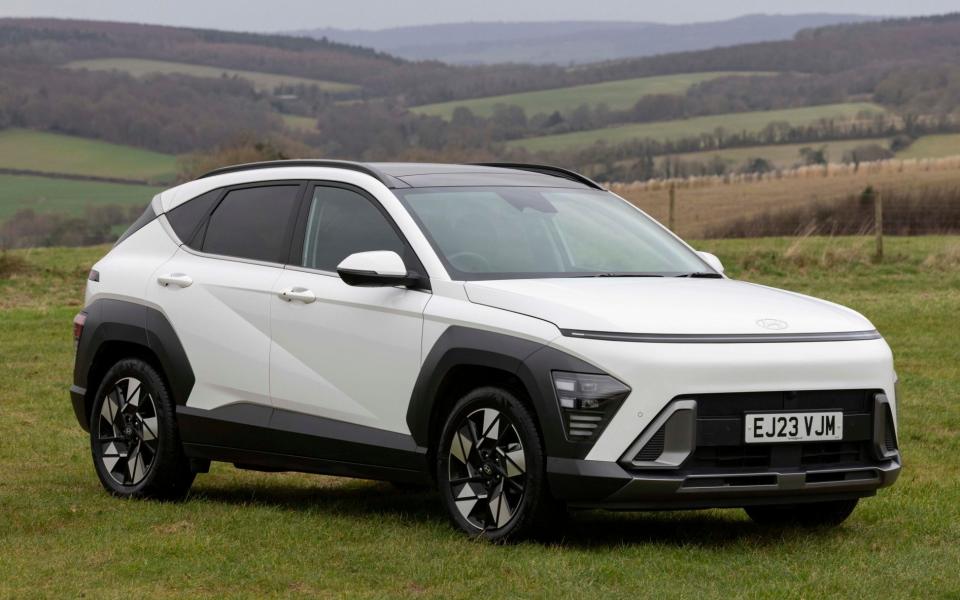
In hybrid form, the Kona’s so-so performance and underwhelming driving experience make it feel a bit average. But it does offer excellent fuel consumption and an affordable price – and while Hyundai’s five-year warranty can’t match Toyota’s, this should still be a reliable car that offers plenty of peace of mind. It’s just as unusual to look at as the C-HR, too.
Nissan Qashqai e-POWER 190 Tekna+ Auto
187bhp, 53.3mpg, £42,060 on the road
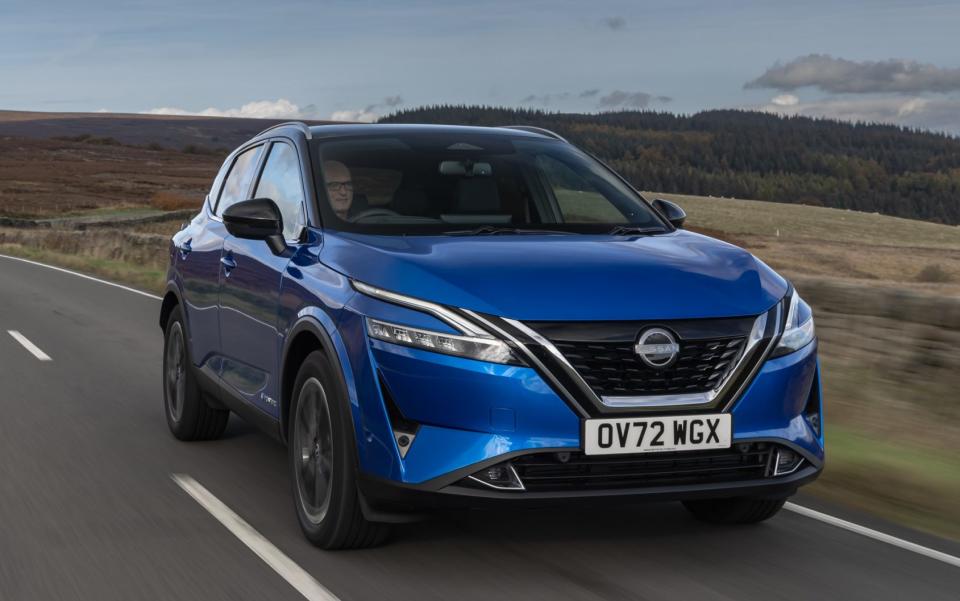
While you pay more for the Qashqai hybrid, you also get more: more power, to be precise. And more fuel consumption; the Qashqai isn’t even as fuel efficient as the C-HR, although you could argue that it would be fairer to compare it with the 2.0-litre C-HR. However, there’s no lower-powered variant, so if you want a hybrid Qashqai, this is it.
Peugeot 2008 Hybrid 136 EAT8
134bhp, 57.6mpg, £31,980 on the road

Don’t be misled by the badging: the 2008 is only a mild hybrid, as opposed to a full one, like the other cars here, which means it has a much smaller battery and a tiny electric motor that can’t actually drive the car. Given all of that, it’s pretty impressive that this 2008 can match the C-HR’s fuel economy – and don’t forget it will do so for a much lower initial outlay, too.

 Yahoo News
Yahoo News 
